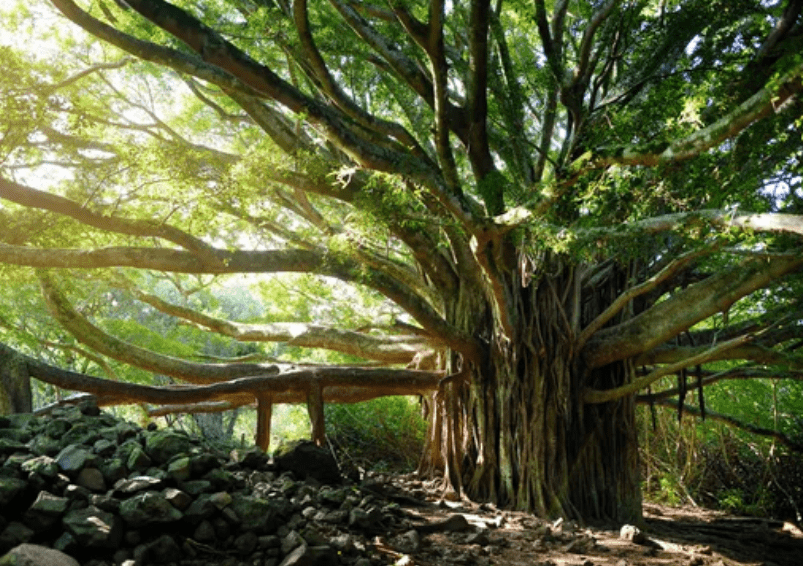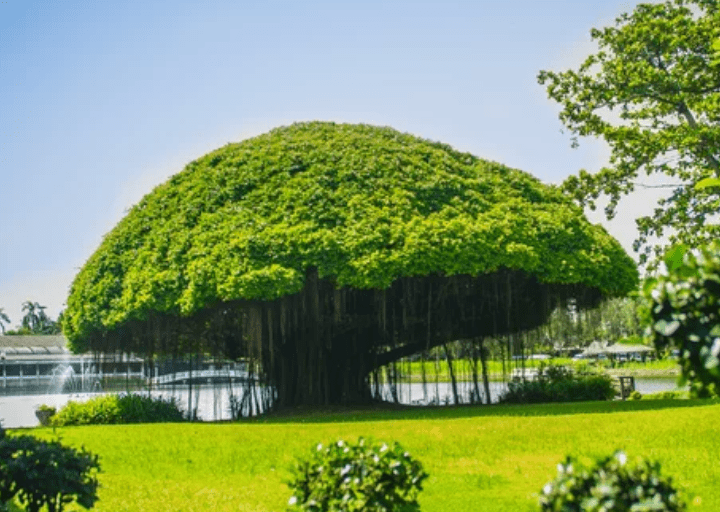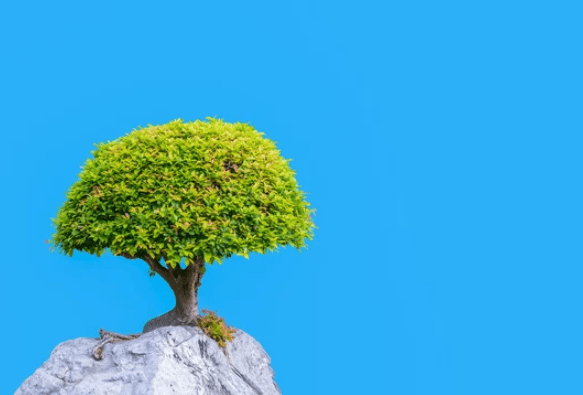
Growing a Banyan Tree
Want to cultivate a Banyan tree in your garden? Find all you need to know about growing a Banyan tree, including expert tips and advice on soil, water, and more
The Banyan tree is a symbol of strength and longevity. It represents the interconnectedness of all things, as its branches send down aerial roots that grow into new trunks, creating a network of trees that can cover acres of land.
Growing a healthy Banyan tree requires patience, knowledge, and care. Here, you’ll find a comprehensive guide that covers everything essential for cultivating a robust Banyan tree. Learn about the origin and symbolism of the tree, identify key characteristics of a healthy specimen, and explore the ideal conditions for growth and nurturing.
You can find common problems and troubleshooting methods included as well. Whether you aim to cultivate this majestic tree in your garden or understand its significance in religious worship, we provide all the necessary information!
Understanding the Banyan Tree
The banyan tree, scientifically known as Ficus benghalensis, is a renowned tree species in India and Pakistan. It is recognized for its striking appearance, featuring thick aerial roots that grow down from the branches and form additional trunks, creating a remarkable and majestic sight.
These trees can grow to massive proportions, spanning several acres and providing generous shade with their wide canopy. Banyan trees are often linked to gods and spiritual practices in Hinduism, and they can grow to massive proportions, spanning several acres and providing generous shade with their wide canopy.
One of the most famous examples is the magnificent banyan tree in Kolkata, India, estimated to be over 250 years old.
The Origin and Symbolism of Banyan Trees
Banyan trees hold immense cultural and symbolic significance in various Asian cultures. In Hindu mythology, we believe these majestic trees to be the abode of Lord Krishna, making them sacred and revered. The extensive root system of the banyan tree symbolizes stability, strength, and endurance, reflecting their ability to withstand the test of time.
This remarkable tree’s reputation as a provider of shelter and support for many organisms has also made it a symbol of nurturing and protection. Banyan trees are associated with wisdom and enlightenment because of their long lifespan and remarkable adaptability to different environments.
Key Characteristics of a Healthy Banyan Tree
A healthy banyan tree boasts vibrant green leaves that show no signs of discoloration or wilting. Its roots are thick and well-developed, providing optimal support for the tree. Fruits, usually figs, are plump and ripe when produced by a healthy banyan tree.
The bark appears smooth, devoid of any disease or decay. A healthy banyan tree showcases a well-formed, dense canopy with ample shade. These characteristics ensure the vitality and robustness of the banyan tree, making it an iconic species known for its strength and endurance. Gardeners should strive to cultivate these traits when nurturing a banyan tree.
Leaf, Root, and Fruit Features
The banyan tree boasts large, glossy, and dark green leaves that measure several inches. What sets the roots of the banyan tree apart is their uniqueness; they grow from the branches and form thick aerial roots that eventually reach the ground. For fruits, the banyan tree produces small fig-like delights that change from green to reddish-brown as they ripen.
Not only are these fruits edible, but they also serve as a vital food source for various birds and animals. The banyan tree’s leaves, roots, and fruits possess medicinal properties and find their purpose in traditional herbal remedies.
Essential Conditions for Growing a Banyan Tree
Banyan trees thrive in tropical and subtropical climates, where freezing temperatures are not an issue. These trees require moist, well-draining soil to prevent root rot caused by water logging. Banyan trees can survive in full sunlight if they receive sufficient water, although they prefer partial shade.
To grow a banyan tree optimally, supplement the ideal soil rich in organic matter with compost. Given their extensive root system and canopy, these trees need ample space to grow and flourish. By ensuring we meet these essential conditions, gardeners can successfully cultivate banyan trees and witness the beauty of these remarkable strangler figs.

Ideal Climate and Soil Type
Banyan trees thrive in warm and humid climates, with temperatures ranging from 68 to 86 degrees Fahrenheit. Frost sensitivity is a common characteristic of banyan trees, and they require protection or indoor shelter during cold winters.
For soil type, banyan trees prefer loamy soil that is well-draining and keeps moisture without becoming waterlogged. The ideal pH for the soil is slightly acidic to neutral, ideally between 6.0 and 7.5.
It’s essential to ensure that the soil is fertile and nutrient-rich to support the growth of a banyan tree. By providing suitable climate and soil conditions, gardeners can create an ideal environment for their banyan trees to flourish and thrive.
How to Plant a Banyan Tree?
To plant a banyan tree, select a healthy sapling or get cuttings or seedlings from a reliable source. Choose a spacious location to accommodate the tree’s expansive roots and canopy. Dig a hole twice as wide and deep as the root ball, place the sapling in it, and backfill it with soil while firming it around the roots to eliminate air pockets.
Steps for Proper Planting and Initial Care
Proper planting and initial care are crucial to ensure the successful growth of a banyan tree. After placing the sapling in the ground, it’s essential to water it thoroughly, allowing the soil to settle and providing hydration to the roots.
Experts recommend applying a layer of mulch around the tree’s base to keep the moisture in and suppress weed growth. Regularly monitoring soil moisture levels is essential, ensuring the soil remains consistently moist without becoming waterlogged.
A balanced organic fertilizer during the growing season will give the tree vital nutrients. You should also do pruning to maintain shape, remove dead or damaged branches, and promote overall health and growth. By following these steps, gardeners can help their banyan trees thrive.
How to Nurture a Growing Banyan Tree?
To nurture a growing banyan tree, provide regular watering to keep the soil moist without over-watering. Apply balanced fertilizer during the growing season and prune regularly to remove dead branches. Monitor for pests and diseases, and protect from extreme weather.
Watering, Fertilizing, and Pruning Practices
Watering, fertilizing, and pruning practices are crucial for the healthy growth of a banyan tree. To ensure optimal hydration, water the tree regularly, moistening the soil without waterlogging. During the growing season, provide essential nutrients using a balanced slow-release fertilizer.
Pruning is necessary to maintain the tree’s shape, improve airflow, and remove dead or diseased branches. It is essential to monitor the tree for pests like aphids, mealybugs, or scale insects, as they can negatively affect its health.
You should take prompt pest control measures if needed. Last, branch-supporting pillars can prevent breakage if the branches need extra support.
Troubleshooting Common Banyan Tree Problems
Identifying signs of distress early is crucial to prevent further damage to your banyan tree. Proper watering and adequate drainage can help prevent the development of root rot, a common problem in banyan trees.
Pruning dead or diseased branches is essential for promoting healthy growth and maintaining the overall well-being of the tree. Protecting your tree from pests like aphids and scales can be achieved through the use of natural remedies.
Regularly inspecting your banyan tree for any signs of fungal infections and treating them promptly is necessary to ensure its longevity and vitality.
What are the Signs showing Your Banyan Tree Needs Help?
Signs that your banyan tree needs help include wilting or yellowing leaves (symptoms of water or nutrient deficiency), stunted growth (suggesting poor soil quality or root damage), leaf spots or discoloration (showing a fungal or bacterial infection), excessive leaf drop (a sign of stress or disease), and abnormal growth patterns (requiring attention).
How Tall Will a Banyan Tree Grow?
Banyan trees can reach impressive heights, surpassing 100 feet or more. With proper care and optimal conditions, their growth can be sped up. The unique aerial roots contribute to the tree’s expansive canopy. Growth rates may vary among different banyan tree species. Regular pruning helps manage height and shape.
Banyan Tree Native Growing Regions
Banyan trees are native to South Asia, particularly India and Pakistan. These trees thrive in tropical and sub-tropical climates with abundant sunlight. To ensure optimal growth, banyan trees prefer moist soil and partial shade.
We can grow them outdoors in regions without frost, making them suitable for cultivation in various areas. If you care for them properly, you can grow banyan trees as houseplants in containers.
Native to specific regions, these trees have adapted to their surroundings and become an integral part of the ecosystem. Their ability to flourish in diverse environments has made them a favorite among gardeners and nature enthusiasts.
Banyan Tree Cultivation
To cultivate a banyan tree, you can propagate it through cuttings or seedlings. Ensure you have a well-draining and nutrient-rich soil mix, and choose the right location with full sunlight for optimal growth.
Regular watering is essential, but be careful not to over-water as it can lead to root rot. To keep moisture, apply a layer of compost or organic mulch. By following these practices, you can successfully grow a healthy banyan tree in your garden.
Growing the Banyan Tree in Your Garden
When planting a banyan tree in your garden, choosing a location that offers ample space to accommodate its expansive canopy is crucial. Remember the potential damage that the tree’s extensive and thick roots can cause, so it’s best to plant it away from structures or utilities to avoid future complications.
Regular pruning and maintenance are essential for managing and shaping the tree’s growth according to your preferences. If needed, provide proper support for the branches to ensure stability. You can grow a healthy banyan tree in your garden following these best practices.

Banyan Tree in Religious Worship
Banyan trees play a significant role in religious worship, not just in Hinduism but in other religions as well. Various gods and deities are often associated with banyan trees, which people revere and consider sacred.
It is common to find ancient banyan trees in temples and religious sites. Worshippers perform offerings and rituals under the shade of these majestic trees, creating a divine connection with the higher power they believe in.
Symbolizing longevity and strength, the banyan tree holds a special place in religious practices. It’s expansive canopy and strong roots serve as a metaphor for the enduring power of faith.
Medicinal Qualities of Banyan Trees
People have long been using the banyan tree in traditional herbal remedies because of its various parts that have medicinal properties. The tree’s leaves and bark have been used to treat a range of ailments, from gastrointestinal issues to skin conditions.
Research has shown that extracts derived from the banyan tree exhibit antioxidant properties. However, it is essential to note that before incorporating the banyan tree into any medicinal regimen, a good practice would be to consult a healthcare professional.
Harnessing the natural healing potential of the banyan tree can be a valuable addition to one’s wellness routine, but it is essential to ensure safety and efficacy.
Conclusion
To grow a healthy banyan tree, it is important to understand its origin and symbolism. The key characteristics of a healthy banyan tree include features of its leaves, roots, and fruits. Growing a banyan tree requires ideal climate conditions and specific soil types.
You should do the planting and initial care following the proper steps. Nurturing a growing banyan tree involves watering, fertilizing, and pruning practices. Troubleshooting common problems is essential to ensure the tree’s health. Banyan trees can grow very tall and have native growing regions worldwide.
Also used for religious worship, they are grown in gardens and have medicinal properties. Following these best practices, you can raise a healthy banyan tree and enjoy its beauty and benefits.






















